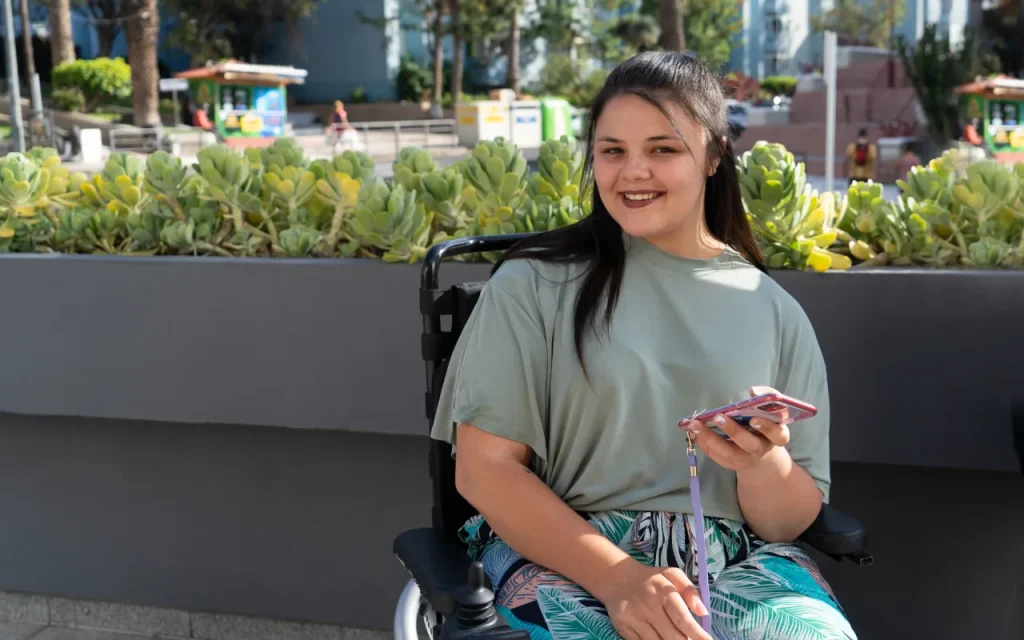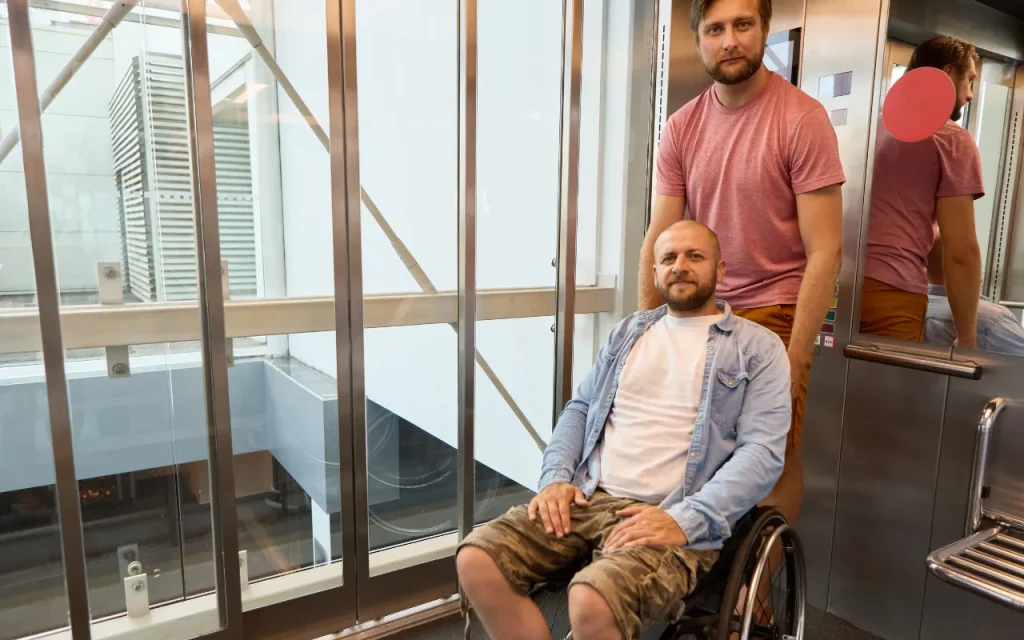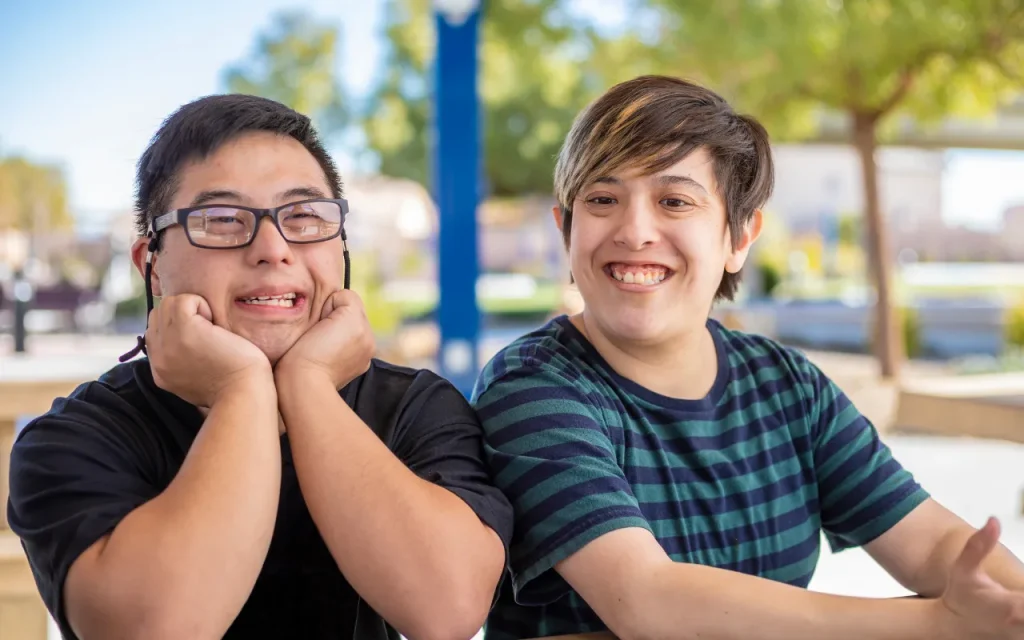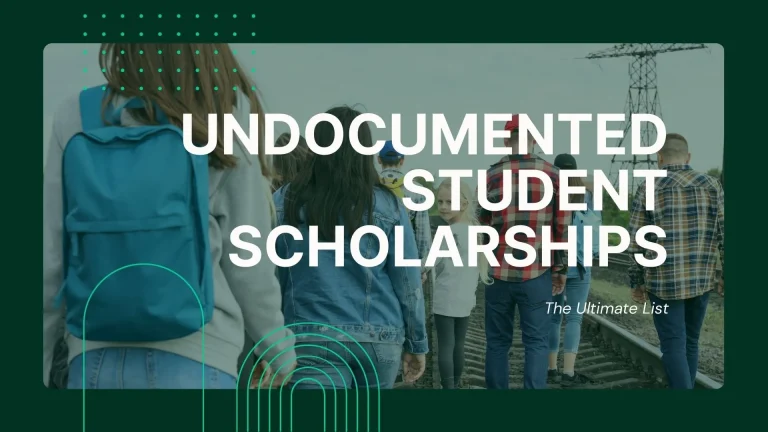Ever since the Americans with Disabilities Act (ADA) was signed into law in 1990, colleges, universities, and trade and vocational schools have made great strides in creating a more level playing field for disabled high school and college students. The changes made by the act have torn down many barriers that made it harder for disabled students to access the same opportunities as everyone else when pursuing higher education.
Today, the physical environment of many college campuses has become a little easier for disabled students to navigate. In addition, educational strategies and facilities are specifically designed to assist undergraduate and graduate students with learning disabilities and emotional, mental, and physical health challenges to succeed and earn a valuable college degree or professional certification.
Moreover, financial aid programs have expanded rapidly. Many organizations have stepped up to provide financial aid explicitly dedicated to making higher education at an accredited college more affordable for students with disabilities both during their years at school and afterward when student loan debt can create impossible burdens.
To help disabled students find financial support, we’ve compiled a list of the top scholarships for students with disabilities. Whether you’re looking to start your undergraduate program or want help as a graduate student, we’ve identified several opportunities for all disabled students. We’ll also cover how to apply for these scholarships and provide tips to help you stand out during the application process.
Don’t miss out—start applying for scholarships tailored to students with disabilities today and unlock a world of educational opportunities!

Challenges Faced by Students with Disabilities
Starting college or university brings a set of challenges for students with disabilities, from navigating physical spaces to needing special tech or support to keep up in class.
Many campuses are spread out and may have older buildings that are not fully accessible. This can make getting from one class to another a logistical challenge for students with physical disabilities. Issues might include:
- Inadequate wheelchair ramps or poorly maintained pathways.
- Buildings without elevators or with elevators that are frequently out of service.
- Restrooms and other facilities that are not adapted for wheelchair users or those with other physical needs.
With the increasing reliance on digital platforms for learning, ensuring that these tools are accessible is crucial. Students may encounter:
- Websites and online learning platforms that aren’t compatible with screen readers or other assistive technologies.
- A lack of appropriate software that can assist in note-taking, reading, or writing for those with visual, auditory, or learning disabilities.
- Courses that do not provide materials in accessible formats, such as Braille or audio.
While many schools have offices dedicated to supporting students with disabilities, the quality and extent of these services can vary. Common issues include:
- Insufficient staffing or resources to provide personalized support for each student’s needs.
- Long wait times for services like note-taking or transcription can delay learning.
- Difficulty in coordinating accommodations across different departments and instructors.
The above challenges are not an exhaustive list or description of the challenges disabled students may face. Nonetheless, by recognizing and addressing their challenges, educational institutions can better support disabled students, ensuring that they have equal access to educational opportunities and a fulfilling college experience.
Current and graduating high school seniors should take advantage of scholarships specifically designated for their grade level. Being in your final year of high school uniquely qualifies you for these senior-specific opportunities, so be sure to explore and apply for them.

Resources for Students with Disabilities
Numerous resources are available to help disabled students navigate the complexities of higher education. These include:
- Disability Support Services: Most educational institutions offer tailored support through their disability services offices, providing everything from testing accommodations to assistive technology.
- Community Organizations: Many nonprofit organizations offer support, advocacy, and informational resources to assist students with specific disabilities.
- Government Programs: Federal and state programs can offer additional support, such as vocational rehabilitation services or financial aid tailored for disabled individuals.
How to Find Scholarships for Disabled Students
Here’s how to start your search:
Start at Your School
- College Advisory Office: A great first stop for information on both national and local scholarship opportunities.
- College Financial Aid Office: They often know about awards based on disability, academic performance, and financial need.
National and Local Organizations
- National Non-Profits: Organizations related to your disability may not offer scholarships directly but often provide extensive lists of potential sponsors.
- State and Local Programs: Don’t overlook the support available right in your community, often tailored to local residents’ needs.
Online Scholarship Platforms
- Comprehensive Platforms like Bold.org: These sites offer tools to streamline your search. Features include:
- Matching Systems: Enter your profile to find scholarships that fit your criteria (e.g., high school senior, STEM major, community service, etc).
Most of these services can also connect you with the right resources or contacts to help boost your grades or test scores and help you strategize about what to put into a personal essay or other pieces that some scholarship program sponsors ask for as part of your application.

How to Apply for Disabled Student Scholarships: A Step-by-Step Guide
Applying for scholarships can seem like a time-consuming task, but breaking it down into steps can help:
Step 1: Research
Start by identifying resources that can help you find scholarships, like your school’s disability support office or reputable websites dedicated to scholarship listings.
Step 2: Prepare Your Documents
Gather necessary documentation, which may include medical records, proof of disability, academic records, and personal statements.
Step 3: Search for Disability-Specific Scholarships
You can use the search feature on Bold.org to narrow down the available scholarship opportunities. Use keywords related to your disability or other aspects of your life to find scholarships tailored to you.
Step 4: Read the Eligibility Criteria Carefully
Each scholarship has its own set of requirements. Ensure you fit the criteria before applying, as some might be specific to a particular disability, academic achievements, or financial needs.
Step 5: Craft and Submit Your Applications
When you’ve identified a good mix of scholarships, start working on your applications and try to submit them as early as possible. However, don’t rush through them; you want to put your best foot forward and create compelling applications that illustrate why you deserve to win.
Scholarships for disabled students pursuing a college education make a big monetary difference. Begin applying today to help lower your college costs.

Tips for Winning a Disabled Student Scholarship
Just like applications for higher education, scholarships take some effort if you want to win. Here are some insider tips to help you during the application process:
Tip 1: Start Early and Plan Ahead
Initiate your scholarship search as soon as you know you’ll pursue higher education. Create a calendar to track deadlines and requirements, along with any relevant information worth remembering. The earlier you begin, the more opportunities you’ll discover.
Tip 2: Personalize Your Applications
Since every scholarship has different requirements, take time to tailor each one to show how you meet the specific criteria. A personalized application resonates more with scholarship committees, so do your best to make each one stand out.
Tip 3: Share Your Unique Story
Your journey as a disabled student is unique and worth sharing. Explain the challenges you’ve faced and what you’ve done to surpass them. No one can replicate your story, so be authentic and show what differentiates you from the other applicants.
Tip 4: Craft a Compelling Essay (if required)
If you must submit an essay, take the time to write a thoughtful and well-constructed piece. Discuss not just your disability but also your achievements, goals, and how the scholarship will help your educational aspirations. And, of course, ensure you adequately answer the provided prompt.
Tip 5: Diversify Your Applications
Applying for multiple scholarships automatically increases your chances of winning, almost like buying numerous raffle tickets. While being a disabled student might qualify you for specific scholarships, also consider other categories like academic achievements, talents, or interests.
Tip 6: Meet All Requirements
Pay close attention to the scholarship requirements. Tailor each application to highlight how you meet these criteria.
Tip 7: Seek Help When Needed
Don’t hesitate to ask for help from advisors, mentors, or teachers. They can provide valuable feedback on your applications and essays.
Undergraduate students, explore scholarships tailored to your specific grade level to help fund your college education. Start your search for undergraduate scholarships today!
Frequently Asked Questions About Scholarships for Disabled Students
What Should I Consider When Applying for Scholarships?
When applying for any scholarship, the most important considerations are whether you meet the requirements shared by the funders and how many scholarships you can realistically apply for. A lot of work is involved in crafting a unique essay or other personal material like a video or design portfolio for scholarships that include those requirements. That limits most students’ ability to apply for more than a couple of those kinds of scholarships. But you can still apply for many more. Sites like Bold.org make applying for more than one or two no-essay awards elementary each year.
When Should I Start Applying for Scholarships?
Every scholarship had different deadlines and start dates for accepting applications. It is always a good idea to send your application as close to the start date as possible. Early bird students get more scholarship offers. Some scholarship organizations accept applications as early as the student’s junior year in high school, while others will require that you’ve started your senior year. Enrolled students can apply for scholarships every year during their undergraduate program and post-graduate college years.
What Percentage of Students With Disabilities Go to College?
Less than 25 percent of students report that they have a disability. Because it is illegal to ask a student who applies to college if they have a disability, that statistic is much lower than the actual percentage of college students with some form of recognized disability. Disabilities include learning and mental disabilities, as well as physical disabilities, and researchers estimate that approximately one out of every five adult Americans experience some form of mental or emotional illness during their lives.
How Do I Make My Application Stand Out?
Your school record and test results are critical for winning and keeping disability scholarships. Check out online tutoring and test prep services during your junior year, if not before, if you want to boost those scores. Beyond your academic achievements, highlight your unique interests and skills. Community service is also an excellent way to get scholarship organizations’ attention.
Are There Scholarships for All Types of Disabilities?
Yes, there are scholarships available for a wide range of disabilities, including physical, sensory, intellectual, and learning disabilities.
How Competitive Are Scholarships for Disabled Students?
While competition varies by scholarship, there is a growing number of opportunities designed to support disabled students, which has helped reduce competition over the years.
Can I Apply for Scholarships Every Year?
Absolutely. You’re encouraged to apply every year as long as you meet the eligibility requirements. This increases your chances of receiving aid throughout your academic career. Additionally, a scholarship you’ve applied for and previously won may be an annual scholarship that may require continual reapplication. Furthermore, being a past recipient could enhance your prospects of winning a disability scholarship or any scholarship again, as it demonstrates your continued commitment and achievement.
Current college students with disabilities should apply for college scholarships whether they plan to attend vocational school or graduate school, as these financial resources can provide essential support for furthering their education in diverse learning environments. Apply today!

Lucy Maddox
Lucy’s international upbringing in Hong Kong and love for literature have shaped her multifaceted background. She attended university in Middlebury, Vermont, before settling in Arlington, Virginia. In her free time, Lucy enjoys True Crime podcasts, thrillers, literary fiction, running, hiking, exploring Washington, D.C.'s newest restaurants, and blogging about her latest travels.






